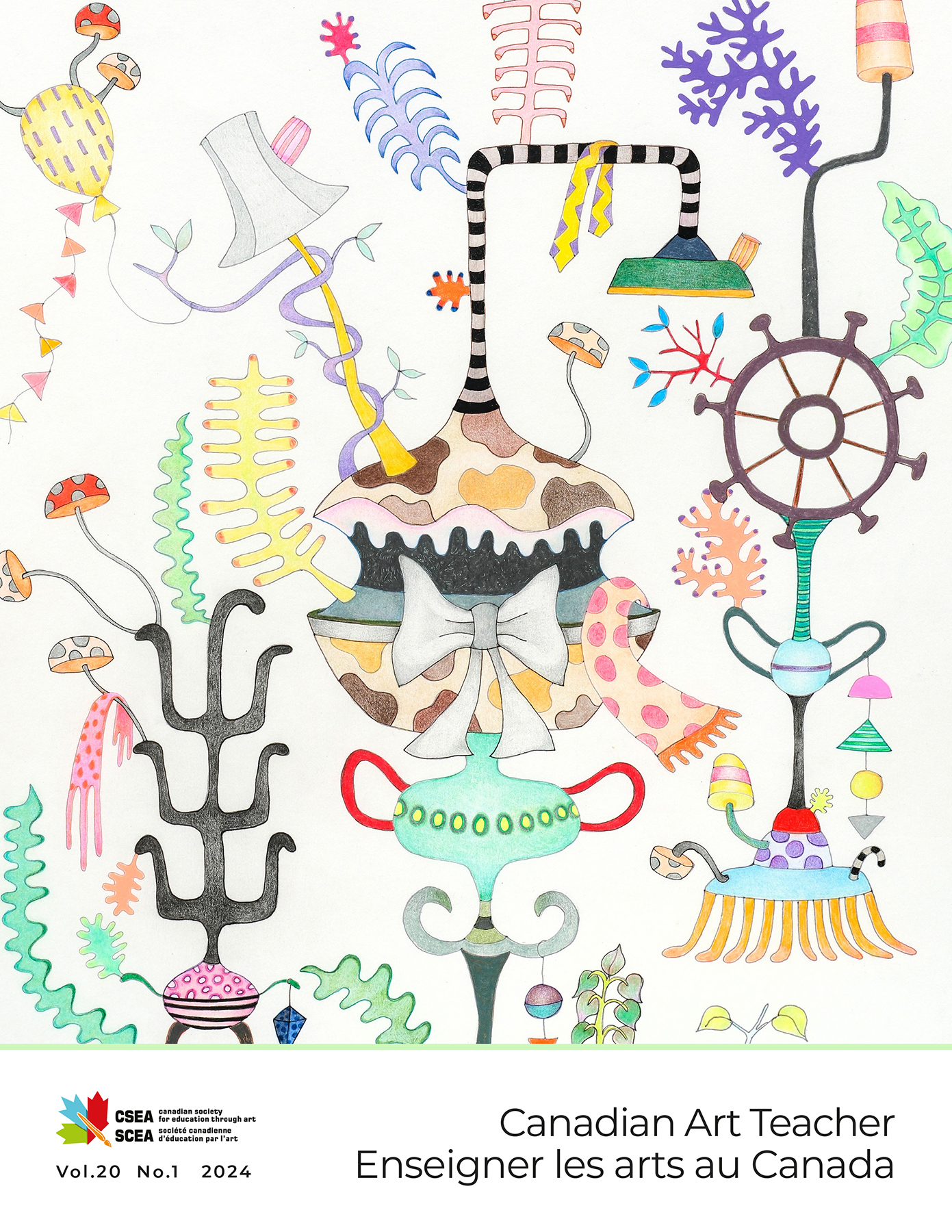Résumés
Abstract
Art/Design Education Resiliency: Co-generatively in a Community of Practice is a co-authored dialogic/dialectic conversation among co-founders of the Creative Research Inclusive Practices (CRIP) Lab located at OCAD University. Founders are Pam Patterson, Faculty of Art, and School of Graduate Studies, OCAD U; Roman Romanov, Faculty of Design, OCAD U; and Matt Hawthorn, Head Design, University of Derby. The three have named their collective research practice as a form of snorkelling1! They swim the surface of discourse in play, deep diving into projects or exhibitions when paradoxical or multi-positional situations arise. It is a critical and yet deeply pleasurable discursive practice.
Veuillez télécharger l’article en PDF pour le lire.
Télécharger
Parties annexes
Biographical notes
Pam Patterson
[No biographical note available for this author]
Roman Romanov
Roman is an internationally experienced architect, artist, illustrator and educator with an ocular disability based in Toronto, Canada. He is a sessional faculty member at OCADU, as well as a member of the Rick Hansen Foundation's instructional team, offering the Rick Hansen Foundation Accessibility Certification training at Laurentian University. He is a member of Waterfront Toronto’s Accessibility Advisory Committee, the founder and principal of Linear Nonlinear Inclusive Design, a bilingual accessible design practice in Toronto, as well as co-founder of CRIP Lab at OCADU.
Matt Hawthorn
Matt Hawthorn is an artist and creative educator based in the UK and a co-founder of CRIP Lab at OCADU. Currently employed as Head of Design at the University of Derby, his work as an educator has focused on the scaffolding of students as creative research practitioners through an enabling curricula which challenges established perceptions, patterns and social norms. Matt’s work as an artist focuses on playful and critical environments and reconsideration of landscapes and cityscapes through creative interventions.
Bibliography
- Benjamin, W. (June 13, 2021, Edition). The Work of art in the age of mechanical reproduction. Lulu.com/Amazon.ca.
- Berger, J. (1972). Ways of seeing. Penguin Books.
- Bharucha, R. (1997). When ‘Eternal India’ meets the YPO, Third Text, 11(39), 39-58.
- Burger, P. (1984 ). Theory of the avant garde, University of Minnesota Press.
- Courtney, R. (1992). Toward a theory of curriculum. Unpublished manuscript, Ontario Institute for Studies in Education, University of Toronto.
- Deleuze, G. (1992) Expressionism in philosophy: Spinoza. Zone Books.
- Heisinger-Nixon, D. (2017). On Crip horizons. Disability Studies Quarterly, 37 (3). https://dsq-sds.org/index.php/dsq/article/view/5961/4696
- Lee, S. (2019). Crip horizons: Disability art futurism. Akimbo https://akimbo.ca/akimblog/crip-horizons-disability-art-futurism-by-sean-lee/. September 26.
- LOHA, Big Blue Bus Stop - Big Blue Bus Stops — LOHA: Lorcan O'Herlihy Architects (loharchitects.com). (Retrieved Aug 25, 2023).
- Marin, L. & Imperial, B. (Producers), Taylor, A. (Director). (2008). Examined life [Motion Picture]. Zeitgeist Films.
- Noddings, N. (1988). An Ethic of caring and its implications for instructional arrangements. American Journal of Education, 96 (2), 215-230.
- Robson, J. (2001). Norman, in Hawthorn, M. The Degenerate Art Book, Arnolfini Gallery.
- Stilgoe, J. R. (1998). Outside lies magic. Bloomsbury Press.
- Woodward, S. (2017). How can we move towards meaningful access for all? Rick Hansen Foundation Blog. https://www.rickhansen.com/news-stories/blog/how-can-we-move-towards-meaningful-access-all

